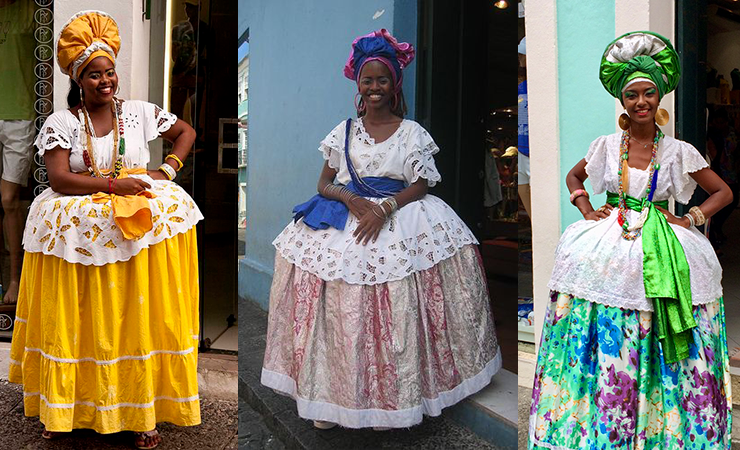
Brazilian clothing offers a captivating blend of tradition, culture, and history, each piece narrating its own unique story. The Fashiongton Post will lead you to the roots of the distinctive traditional garments that define Brazil’s diverse regions and rich heritage, highlighting the intricate craftsmanship and cultural significance behind it.
Traditional Brazilian Clothing
Baiana Dress
The Baiana dress, originating from Bahia region, is perhaps the most iconic traditional garment in Brazil. This elaborate dress is often worn by women during celebrations and religious ceremonies. It includes a lace blouse, a voluminous skirt, a shawl, and a headscarf, typically in white. The dress is accessorized with colorful beads and jewelry, reflecting African influences.
Bombacha Pants
Common in the southern regions, Bombacha pants are baggy trousers tied at the ankles. These pants are paired with wide-brimmed hats, leather boots, and ponchos, highlighting the equestrian culture of the area.
Canga
Canga is a versatile piece of clothing used as a wrap or beach towel, especially in coastal regions. It is a colorful, printed fabric that can be tied around the waist or worn as a dress. Canga is essential for beachgoers and is a staple of Brazilian beach fashion.
Feathered Headdresses
Indigenous tribes in the Amazon wear elaborate feathered headdresses during rituals and festivals. These headdresses are crafted from the vibrant feathers of local birds and symbolize the connection between the people and nature. Each tribe has its unique design, showcasing its distinct cultural identity.
Festival Costumes
Brazil is renowned for its exuberant festivals, most notably Carnival. During Carnival, elaborate costumes adorned with sequins, feathers, and bright colors dominate the streets. Samba dancers wear intricate outfits that include headdresses, bejeweled bras, and skirts, reflecting the festive and flamboyant nature of the event.
Renda de Bilro
Renda de Bilro, or bobbin lace, is a traditional textile craft from the northeast of Brazil, especially Ceará. This lacework is used to create delicate blouses, dresses, and accessories. The intricate patterns and fine craftsmanship make Renda de Bilro highly prized and a symbol of Brazilian heritage.
Pano da Costa
Pano da Costa is a traditional wrap used by Afro-Brazilian women, particularly in religious ceremonies of Candomblé. This rectangular piece of cloth is often adorned with vibrant patterns and is draped over the shoulders or around the waist, symbolizing cultural pride and spiritual connection.
Carimbo Dress
Worn in the northern region of Brazil, particularly in Pará, the Carimbo dress is part of the traditional dance attire. It features a wide, colorful skirt and a fitted blouse, often decorated with ruffles and lace. The dress is designed to enhance the movements of the Carimbo dance, reflecting the joyous spirit of the region.
Fringed Ponchos
In the southern states, fringed ponchos made of wool or cotton are popular among men and women. These ponchos provide warmth and protection against the elements, and their intricate designs often reflect indigenous patterns and symbols.
Modern Brazilian Fashion
Brazilian fashion today seamlessly blends traditional elements with contemporary trends. The vibrant colors, bold patterns, and sustainable materials seen in modern Brazilian clothing reflect the country’s dynamic culture. Key pieces include the famous Brazilian bikinis, tropical printed dresses, and handcrafted accessories, all of which embody Brazil’s unique style and lively spirit.
The post Complete Guide to Brazilian Clothing appeared first on The Fashiongton Post.
